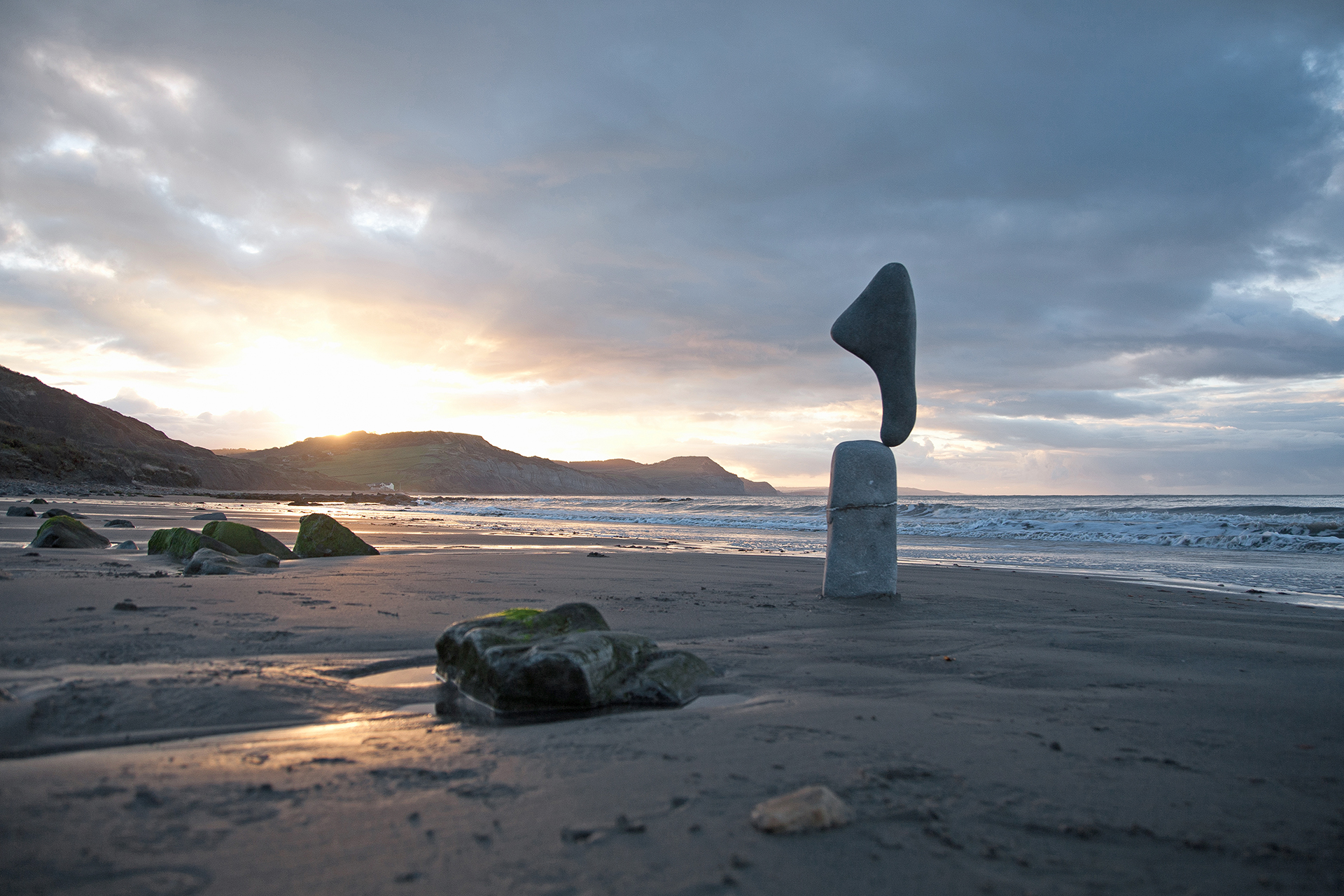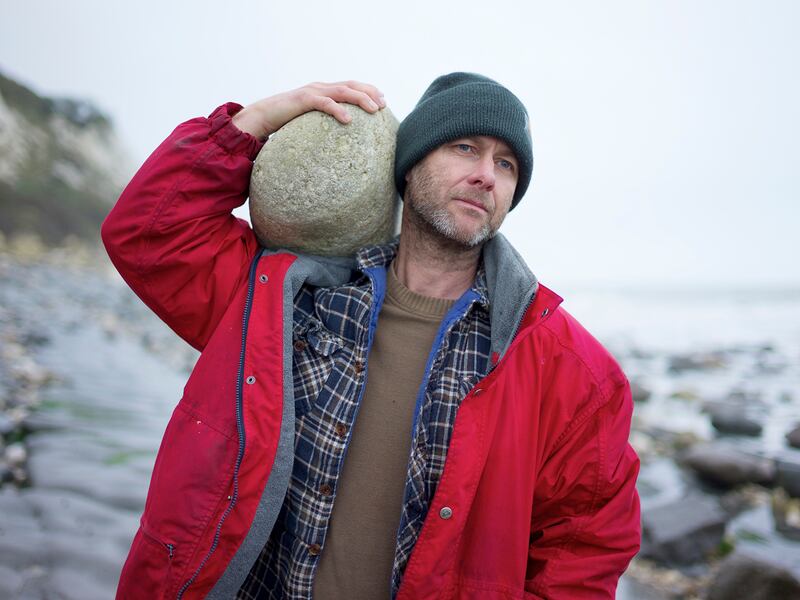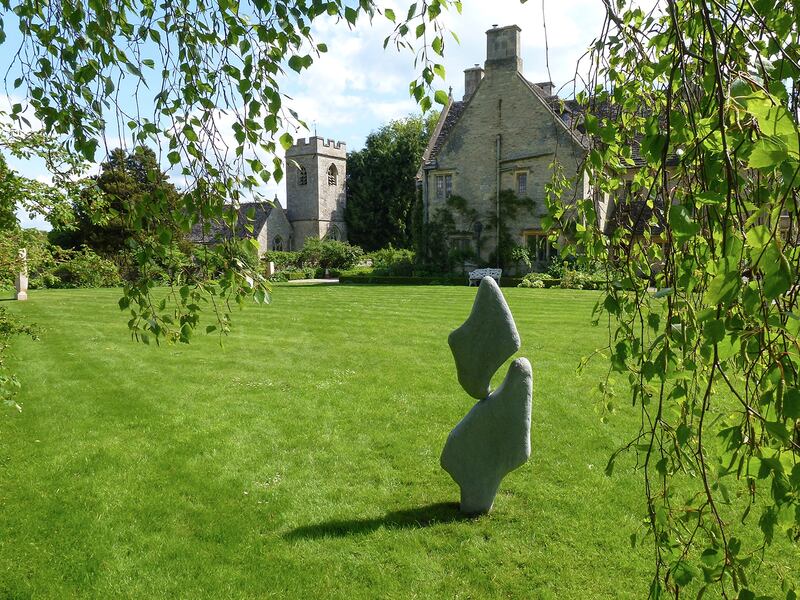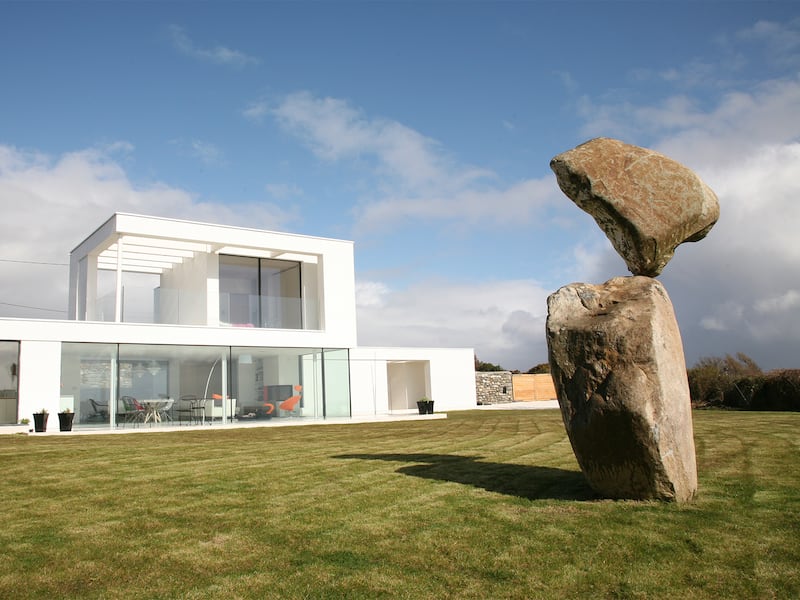
There’s a beautiful equilibrium, or maybe a paradox, in the fact that the artist Adrian Gray discovered his extraordinary talent for balancing rocks at a time when his body was in total imbalance. Twenty or so years ago, he became seriously ill while working in Madagascar and had to be flown back to the U.K. for treatment. The infection left Gray with a deep lethargy and a sensitivity to electricity and radio waves.
To recuperate, he left modernity behind, moved into a limestone house carved into a cliff—with no electricity or cell-phone signal—and immersed himself in nature, spending many hours of many days, weeks, and months walking along the Jurassic Coast in the south of England.

Friends encouraged him to take up surfing, and while waiting for the waves, he started toying with the stones and rocks on the beach, putting one on top of the other to create structures that seemed to have their own life force, an energy that was so much more powerful than when they were lying on the sand.
I think people are fascinated by the contradictions [of my work], by the fact that it seems to defy gravity while in reality it is only possible because of it—Adrian Gray
Gray realized he had an almost intuitive sense for balancing rocks, gradually working with stones of up to 33 pounds (15 kg), gently manipulating and moving the top stones by millimetres until he felt them become weightless in his hands, knowing then that they were being carried by the boulder beneath them.
He found the whole process extremely therapeutic. “It took me to a place of stillness,” he says. “The construction of each one was like a meditation. I don’t think that, at that stage, I considered I was making art, not initially. It was something I did because it made me feel so much better. I found it totally absorbing, as if my brain, my hands, and the stones were in perfect communication. I was working with the stones, but equally, they were working with me, and together we reached this point of harmony, of balance.”

Related: Plan a Visit to a Sculpture Park
Gray says he also derived comfort from the transience of his endeavors, from the fact that, for safety reasons, the sculptures he created had to be dismantled soon after he completed them.
“There was a lesson in that,” he says. “In experiencing impermanence so literally—in making something that I knew I would take apart almost immediately—it showed me over and over again that situations change, and sometimes quickly. There were rocks on the beach, which temporarily became a sculpture, and which then became rocks again. I really came to know, on a very profound level, that nothing lasts forever, no matter how much it feels like it will, and this gave me hope that my health would improve.”
Gray would photograph his structures, and soon found an audience for his images. From that followed exhibitions at shows such as London’s world-famous Chelsea Flower Show, which introduced him to audiences who now commission him to create work balancing rocks for both public and private spaces. He has installations in private residences in Spain, Ibiza, Sri Lanka, and soon, Singapore.

Related: Find Inspiration in These Private Sculpture Gardens
These pieces, of course, require permanence, so he has devised a carefully guarded method of pinning them together, so that they are stable. He still balances the pieces by hand, or, if they are too heavy to lift—he is now working with rocks that are up to 88 pounds (40 kg)—by crane, filming and photographing the process as part of the artwork. He then dismantles them and erects them again, holding the pieces together with steel rods.
How does he choose the rocks? “I look for interesting shapes. All the rocks are natural, they have all been weathered and shaped by nature, by being outside in the rain and the wind, by being carved by waves. I let the forms inspire me. Some of my figures are quite anthropomorphic, so I look for a good torso rock, and then a stone that complements that, but really, it’s all about how they work together.
"Sometimes the beauty comes from incongruity, a sinewy stone teetering on its smallest point, on a curvaceous base. Some of the pieces are like acrobats, seemingly suspended in space, but actually supported by gravity, by Earth’s own force.”

The hardness of the rock is important. Limestone, blue lias, and sandstone all provide good purchase. Anything softer might crumble under the intense pressure at the point of contact. Typically, he balances two, perhaps three, stones as this is what produces the best form, though he doesn’t rule out working with more, providing he could get the shape right.
Most commissions are for a single sculpture, but some of his personal favorites have been of groups, not least because balancing several structures on a wind-blasted beach was enormously challenging. “It was a goal worth striving for,” he says.
Gray loves that his work balancing rocks always gets a reaction. “I think people are fascinated by its contradictions, by the fact that it seems to defy gravity while in reality it is only possible because of it. Equally, there is a paradox between how fragile the artwork is—in terms of it would take nothing more than a nudge to topple it—and the solidity of the elements of which it is made. Some people read more into this than others. But what’s important to me is that they respond to it.”
Banner image: A sculpture on the beach by Adrian Gray. Courtesy: Adrian Gray


